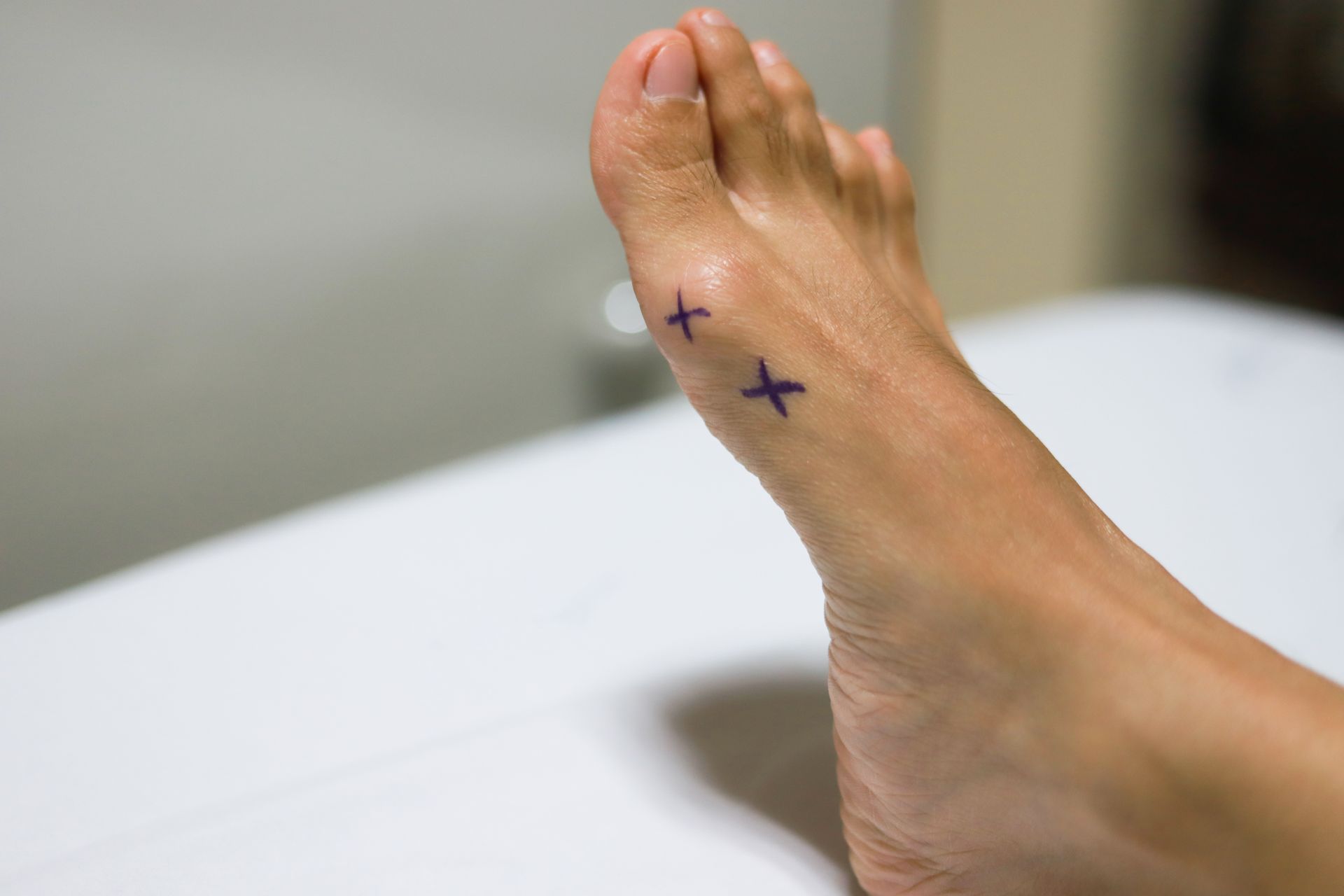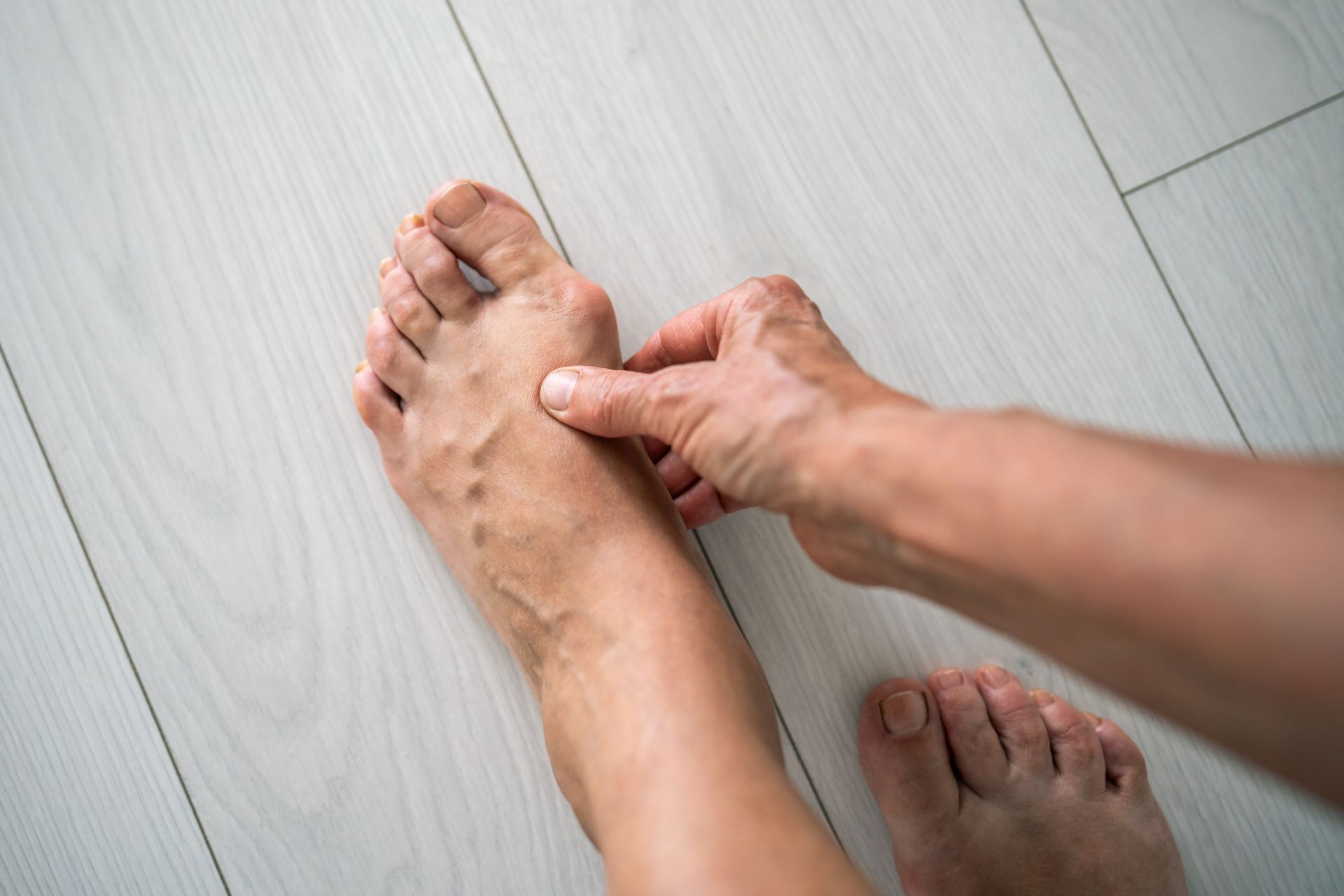Cheilectomy Surgery to Treat Foot Arthritis
What is a Cheilectomy?
A cheilectomy is one of the most commonly performed surgeries for painful arthritis of the big toe joint. A joint is comprised of 2 bones separated by a cushion known as cartilage. When that cartilage wears down and thins out, then arthritis develops. As the cartilage thins, the range of motion through the joint decreases and often creates bone spurs around the arthritic joint. In the big toe, this is called Hallux Limitus . The surgical procedure cheilectomy is a clean-up procedure to remove surrounding bone spurs and inflamed tissue called synovitis. Hallux limitus can develop from an injury or from gradual wear and tear.
Who Needs a Cheilectomy?
Non-operative treatments for hallux limitus include shoe changes, anti-inflammatory medications, modifying activities and cortisone injections. These treatments are often helpful in reducing painful symptoms and putting off the need for surgery, but they do not restore the cartilage or reduce the actual damage to the joint. Cheilectomy is a good option for younger, active patients with mild to moderate big toe arthritis who have failed non-operative treatments.
How is a Cheilectomy Performed?
This is an outpatient surgery, usually performed at an ambulatory surgical center, that takes roughly 30 minutes. Cheilectomy is performed under IV sedation with the need for general anesthesia. During the surgery, a small incision is made over the big toe joint. The surrounding bone spurs are removed with a small chisel or a surgical saw. Inflamed tissue or synovitis is removed with a scalpel. Sometimes loose pieces of cartilage are encountered and can be removed. The incision is closed with sutures.
What is the Recovery for Cheilectomy?
Individual surgeons will vary the exact details for recovery based on individual patients and personal preference. Generally, recovery entails one week of rest, keeping the foot elevated and using a soft bandage with a protective surgical shoe. Crutches and a wheelchair are not typically utilized. A patient can perform heel weightbearing in the surgical shoe. After one week, patients are allowed to weight bear as comfortable in the surgical shoe and can transition to a regular shoe at 4 to 6 weeks post-operative. Athletic activities resume between 8 to 10 weeks following cheilectomy.
What are the Advantages of Cheilectomy?
The main advantage to cheilectomy is its success rate. Studies repeatedly show 90% or greater success rates with cheilectomy at 10 year follow up and lower than 10% rate of revision. Cheilectomy offers high satisfaction rates with a relatively simple recovery. Also, the surgery allows continued range of motion through the big toe joint, referred to as a joint-sparing procedure.
What are the Risks of Cheilectomy?
The risks of cheilectomy are relatively few. The primary risks of the procedure are stiffness in the big toe joint, persistent pain and progressive worsening of arthritis in the big toe. In the event of failure, the surgery of choice is fusion or arthrodesis of the big toe joint. Fusion offers long term pain relief but at the expense of motion.
If you are suffering from arthritis in the big toe, a cheilectomy may be a viable treatment option. Schedule an appointment with Dr. Patrick Hall to learn more about the procedure and if it may be beneficial for your condition.


